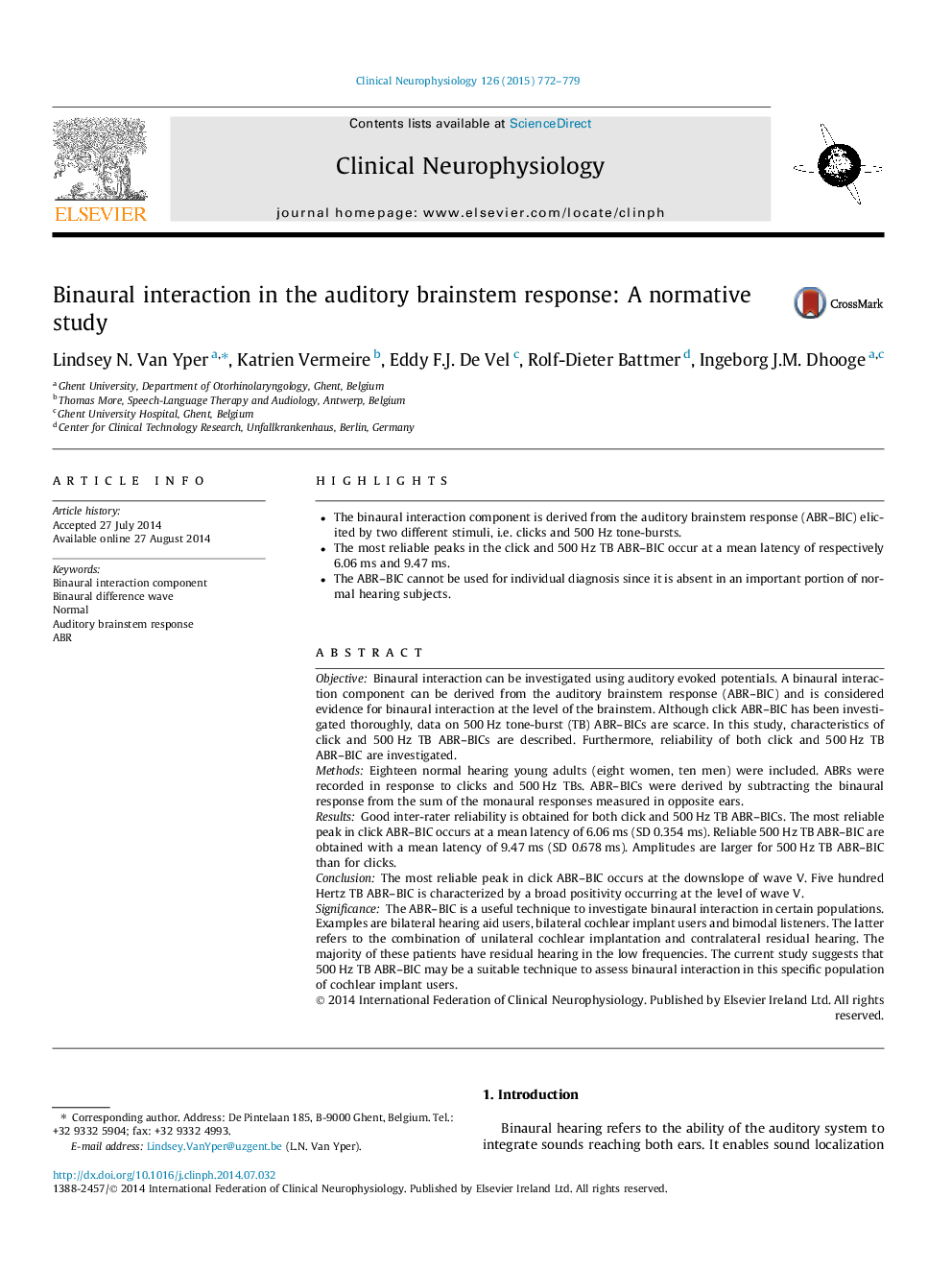| Article ID | Journal | Published Year | Pages | File Type |
|---|---|---|---|---|
| 3043006 | Clinical Neurophysiology | 2015 | 8 Pages |
•The binaural interaction component is derived from the auditory brainstem response (ABR–BIC) elicited by two different stimuli, i.e. clicks and 500 Hz tone-bursts.•The most reliable peaks in the click and 500 Hz TB ABR–BIC occur at a mean latency of respectively 6.06 ms and 9.47 ms.•The ABR–BIC cannot be used for individual diagnosis since it is absent in an important portion of normal hearing subjects.
ObjectiveBinaural interaction can be investigated using auditory evoked potentials. A binaural interaction component can be derived from the auditory brainstem response (ABR–BIC) and is considered evidence for binaural interaction at the level of the brainstem. Although click ABR–BIC has been investigated thoroughly, data on 500 Hz tone-burst (TB) ABR–BICs are scarce. In this study, characteristics of click and 500 Hz TB ABR–BICs are described. Furthermore, reliability of both click and 500 Hz TB ABR–BIC are investigated.MethodsEighteen normal hearing young adults (eight women, ten men) were included. ABRs were recorded in response to clicks and 500 Hz TBs. ABR–BICs were derived by subtracting the binaural response from the sum of the monaural responses measured in opposite ears.ResultsGood inter-rater reliability is obtained for both click and 500 Hz TB ABR–BICs. The most reliable peak in click ABR–BIC occurs at a mean latency of 6.06 ms (SD 0.354 ms). Reliable 500 Hz TB ABR–BIC are obtained with a mean latency of 9.47 ms (SD 0.678 ms). Amplitudes are larger for 500 Hz TB ABR–BIC than for clicks.ConclusionThe most reliable peak in click ABR–BIC occurs at the downslope of wave V. Five hundred Hertz TB ABR–BIC is characterized by a broad positivity occurring at the level of wave V.SignificanceThe ABR–BIC is a useful technique to investigate binaural interaction in certain populations. Examples are bilateral hearing aid users, bilateral cochlear implant users and bimodal listeners. The latter refers to the combination of unilateral cochlear implantation and contralateral residual hearing. The majority of these patients have residual hearing in the low frequencies. The current study suggests that 500 Hz TB ABR–BIC may be a suitable technique to assess binaural interaction in this specific population of cochlear implant users.
